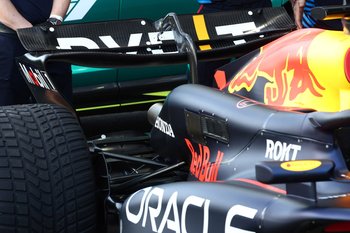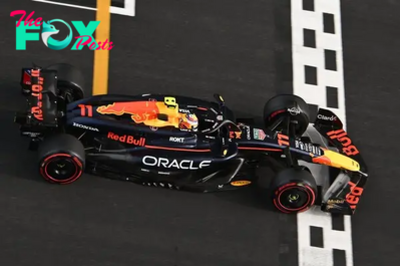F1 News
What F1 rear wings are telling us about the 2024 tech battle
While downforce remains an important factor, you will not get far these days if it comes with too much drag. The rewards are huge if you can deliver a car that is super strong in a straight line.
Many of Max Verstappen’s successes have been built on the way in which either he is unpassable at the front or he can easily scythe his way through the pack, because of an inherent top speed advantage.
But achieving the right downforce/drag level for a track is not as easy as it was in the past, where rear wing designs meant the flaps were adjustable, so things could be trimmed up or down depending on what was best.
With the modern generation of rear wings, and the way the rules are configured, flap angles are fixed. The Game has therefore changed and, if a team wants to deliver a lot less drag or a lot more downforce, then that means a totally different rear wing.
Over the first two years of the current rules era, a number of teams had perhaps not focused as much attention on this area – but that has all changed now as the reality has bit about this critical element of performance.
As McLaren team principal Andrea Stella explained, the only way teams can adjust drag levels now is with new families of wings.
“Once you have a certain car that is relatively mature, like the launch car, the drag level is pretty much set by the rear wing,” he said. “It's not like because you have all the bodywork, floor, and front wing, you need to kind of redesign new families of rear wings [to compensate].
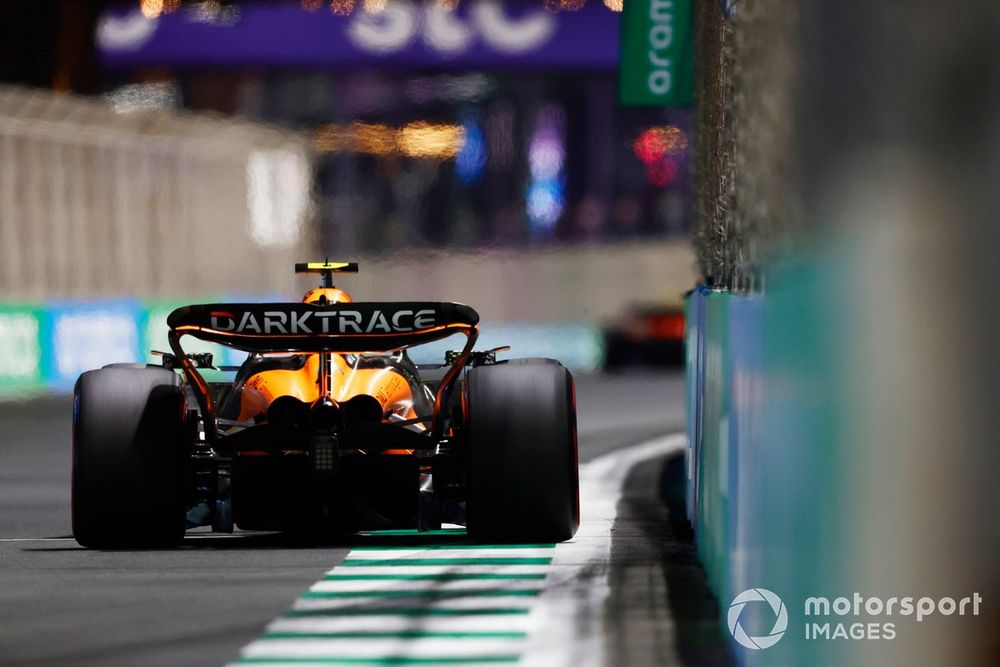
Lando Norris, McLaren MCL38
Photo by: Zak Mauger / Motorsport Images
“You design new families of rear wings because you see that in introducing new families, you just find more efficient rear wings. So, it's not like the rear wing needs to follow, in terms of drag level, the overall car. It almost has an independent journey.”
But this is not to say that teams can pursue a super-low-drag wing and expect it to automatically work.
The current cars are very much about how every aero component talks to another, so being able to trim back on a rear wing can only come if there is a degree of confidence over the rest of its performance.
As Stella added: “The rear wing does interact with the shape of the bodywork, with the shape of the floor, and with the rear brakes.
“So, you do have to do all this combination creating the car as a single element, in harmony with the rest. But it's not like you need to change the concept of rear wing because you change drag level. The drag level is very much set by the rear wing.”
The proof of how much teams are playing around with drag levels was shown in Saudi Arabia last weekend as teams put a lot of effort into trying to find the right approach for the first low-downforce track of the season.
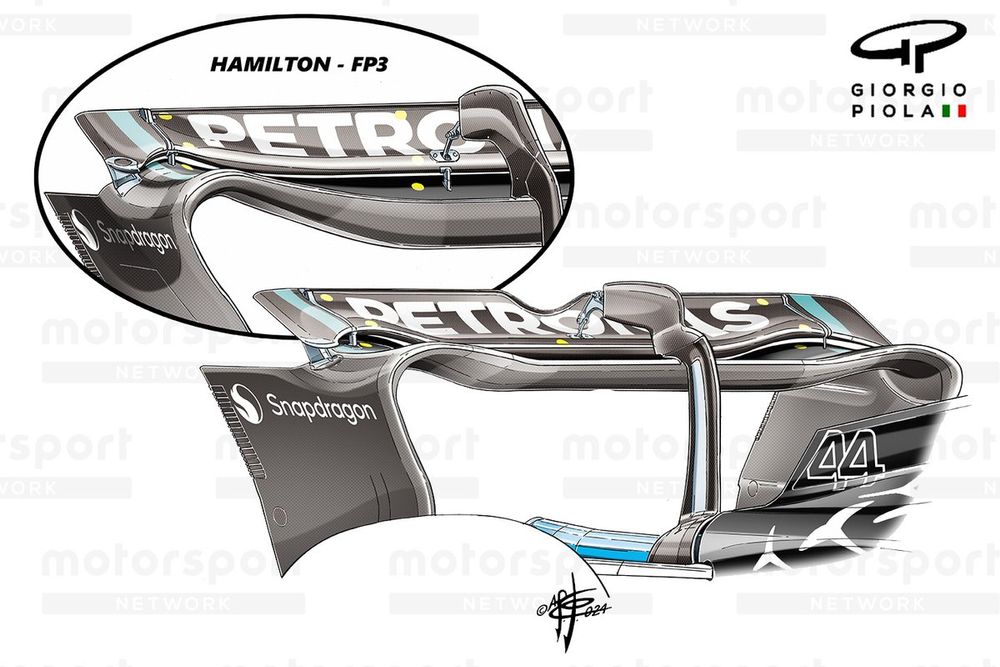
Mercedes W15 rear wing comparison, Saudi Arabian GP
Photo by: Giorgio Piola
Mercedes ran with two specifications of rear wing during the course of the race weekend, as it tried to find the right performance balance for both qualifying and the race.
Both drivers ran the lower-downforce arrangement on Thursday for FP1 and FP2 but Hamilton, perhaps in search of some answers and a little more balance, made the switch to the higher-downforce arrangement used in Bahrain for FP3.
However, needing the top speed offered by the lower-downforce configuration, both drivers ended up utilising it for qualifying and the race.
In terms of the wing’s design, the two solutions have a comparable overall DNA, with the spoon-shaped mainplane’s central section reduced in chord and the outer portion tapered less toward the endplate.
The tip section’s leading edge appears to be drawn down over the endplate more so than before and covers the metal attachment point, which sits astride the rolled mainplane and endplate junction, with all of those surfaces – including the rear cutout – having an impact on the vortex that’s formed.
Notably, the upper flap also features a semi-circular notch in the central section that's been trimmed from the trailing edge in order to better manage the airflow across that portion of the wing.
Interestingly, Mercedes seemed to pair its lower-downforce rear wing arrangement with the same beam wing arrangement as it had used with the higher-downforce wing in Bahrain, which is contrary to what a lot of its rivals did in Saudi Arabia.
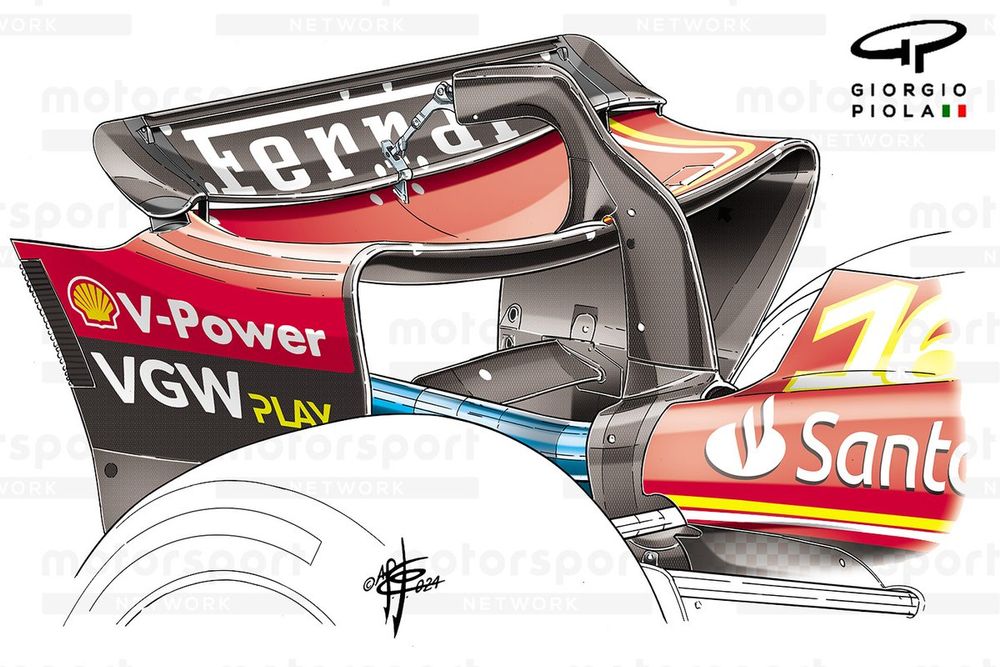
Ferrari SF-24 rear wing detail, Saudi Arabian GP
Photo by: Giorgio Piola
Ferrari announced via the car presentation document ahead of the Saudi Arabian Grand Prix that it had a new, lower-downforce rear wing at its disposal. But, having done the same last season, the Scuderia never actually put the assembly on its car, instead favouring the same design used in Bahrain.
However, it did have another trick up its sleeve in order to help reduce drag and boost its straight-line and high-speed-corner performance. It ran just a single beam wing element, rather than the bi-plane arrangement seen on the SF-24 in Bahrain.
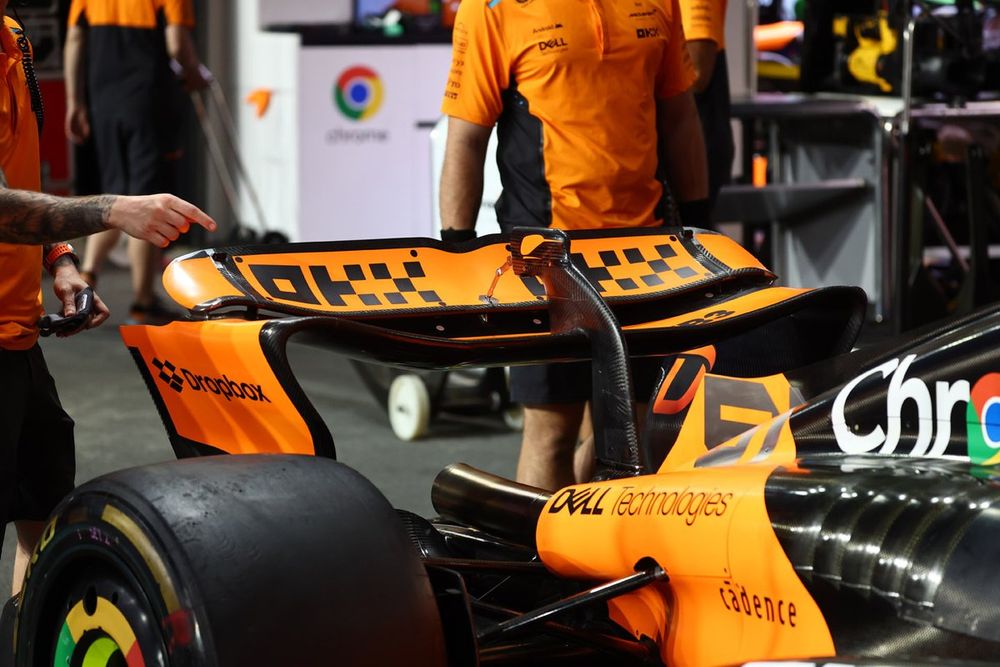
McLaren MCL38 rear wing detail
Photo by: Giorgio Piola
McLaren’s lower-downforce rear wing includes two different design features on the upper flap, as it joins a growing contingent of teams to redeploy a centreline notch on the flap’s trailing edge.
However, in McLaren’s case, it has gone one step further, as the flap is also sunken around the notch to create a different flow environment on the lead up to the semi-circular cutout.
Similarly to Ferrari, McLaren also opted for just a single-element beam-wing arrangement for the MCL38 in Saudi Arabia.
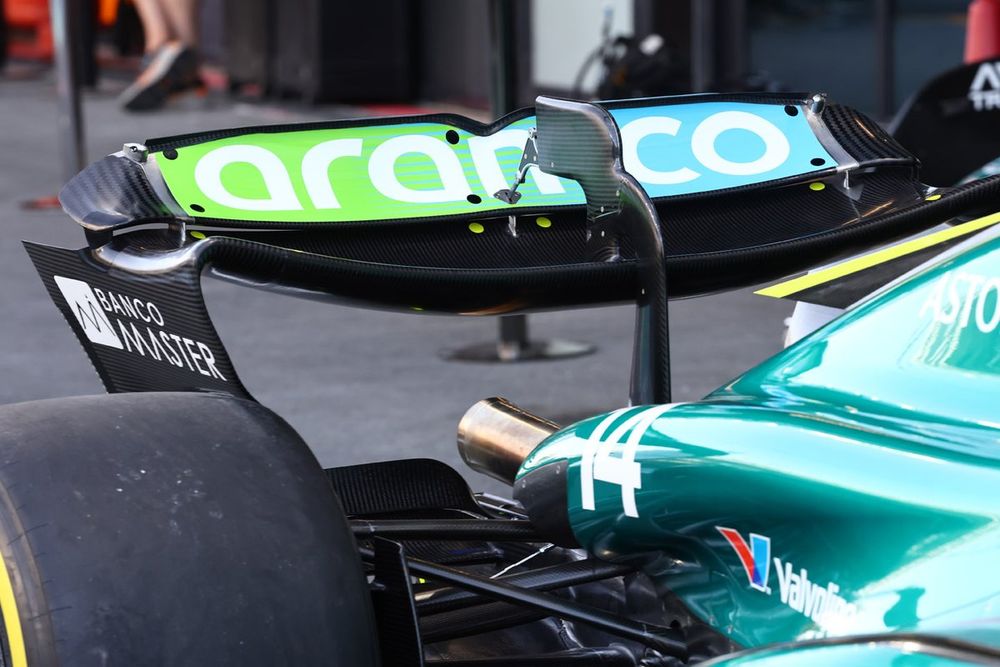
Aston Martin AMR24 rear wing detail
Photo by: Giorgio Piola
Aston Martin was another team to don a new rear wing in Saudi Arabia, with a focus on reducing downforce and drag.
And, like what we’ve already encountered elsewhere, the trailing edge of the AMR24’s upper flap had a centreline notch cut into it.
The outboard section of the wing had also been treated to some changes, with the trailing edge tapered to meet with a shallower, dog-eared tip section, in order to reduce downforce and iNFLuence the resultant vortex generated in this region.
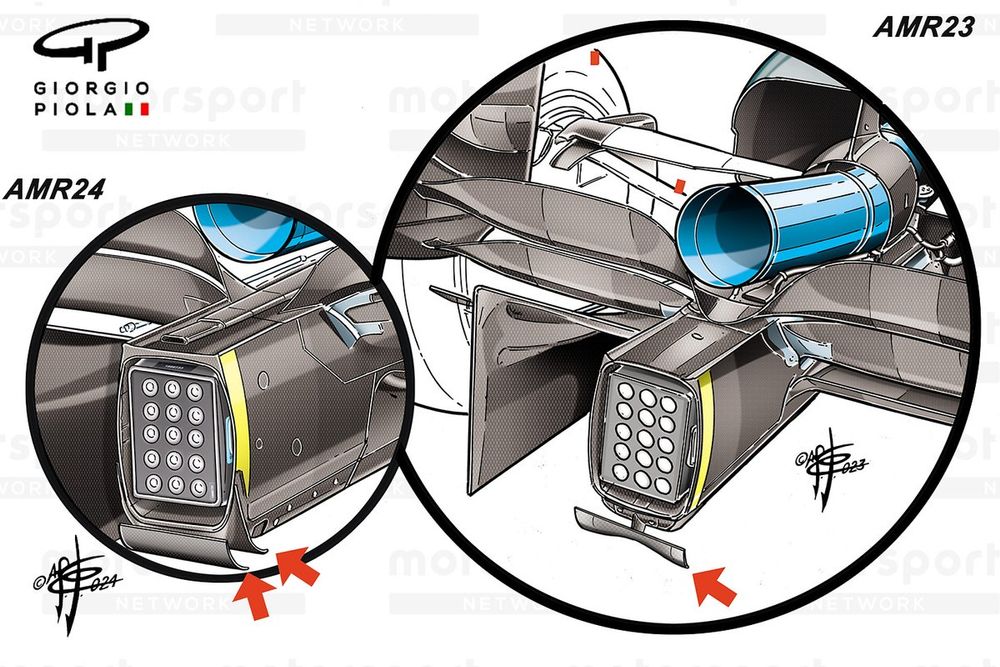
Aston Martin AMR23 and AMR24 diffuser wing detail
Photo by: Giorgio Piola
Elsewhere on the Aston Martin car, Saudi offered us a glimpse of an extra aero tweak that the team had tried in 2023 but couldn’t get to work properly.
It had introduced a bow-tie-like crash structure winglet at the Dutch GP last season but struggled to prevent it becoming damaged during pitstops, even though it had also designed a new jack to accommodate it.
For 2024, the team has overhauled the arrangement, as the AMR24 now features two winglets: one attached to the side of the crash structure, while another, flatter winglet than the one used last season, sits on the back of the crash structure.
-

 F1 News8h ago
F1 News8h agoHow studying Tost, Whiting and Binotto shaped F1's latest team boss
-

 F1 News15h ago
F1 News15h agoF1 chief Domenicali eyes more sprint weekends
-

 F1 News22h ago
F1 News22h ago12 years late: How Hulkenberg is finally getting his shot at a ‘big’ F1 team
-
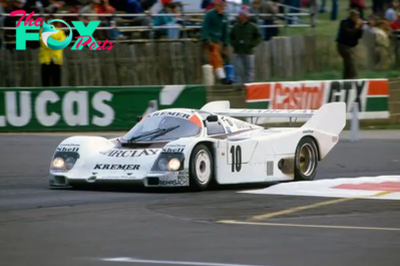
 F1 News1d ago
F1 News1d agoHow a sportscar friendship prevailed over F1 rivalry
-

 F1 News1d ago
F1 News1d agoAndretti Cadillac to hire 60 UK staff as F1 push continues
-
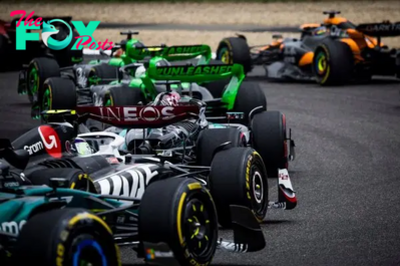
 F1 News1d ago
F1 News1d agoF1 defers decision over points system tweaks
-
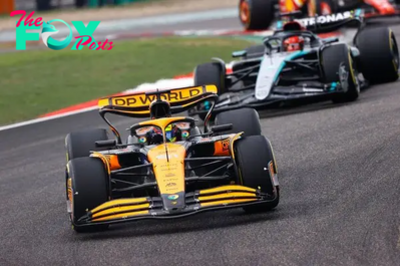
 F1 News1d ago
F1 News1d agoMcLaren needs to understand puzzling “up and down” F1 form - Piastri
-
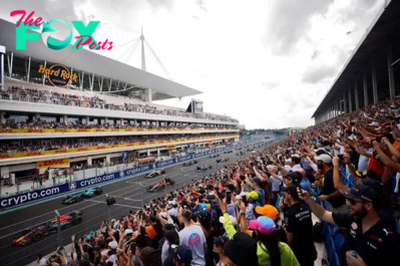
 F1 News1d ago
F1 News1d agoF1 announces 24/7 streaming channel in the US
